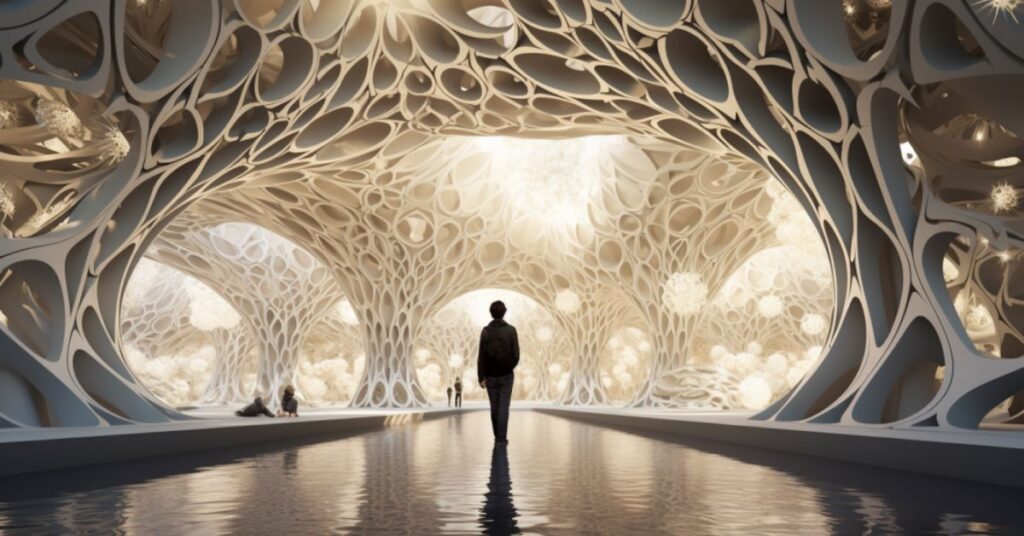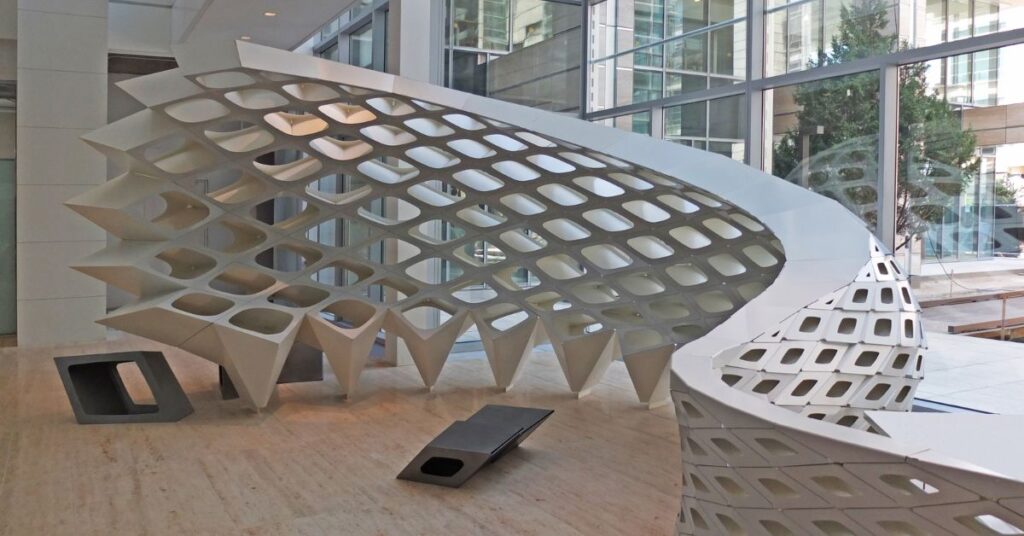Parametric Design in Practice: Transforming Architecture Through Intelligent Geometry In the ever-evolving landscape of architecture, few methodologies have made as profound an impact in recent years as parametric design. Once seen as a futuristic experiment, parametricism has now firmly established itself as a vital tool in contemporary architecture, urban planning, product design, and even furniture making. But what is parametric design in practice, and how does it redefine not just how we design—but how we think about design? This blog dives deep into the concept, exploring its evolution, real-world applications, tools, and transformative potential in architectural practice. Understanding Parametric Design: More Than Just Curves At its core, parametric design refers to a process wherein parameters—numeric or algorithmic variables—are used to define the relationships between design elements. Rather than manually drawing each component, the designer sets up rules and logic, and the design dynamically adapts to any changes in those parameters. This doesn’t just mean wavy buildings and organic shapes. While fluid geometries are often the visual hallmark, parametric design is actually about responsiveness, adaptability, and performance-based design. The concept finds its roots in the late 20th century but became a mainstream methodology with the emergence of tools like Rhino and Grasshopper, which enabled designers to create systems rather than static forms. The Workflow: From Parameters to Performance In parametric design, the architect or designer first defines a series of input parameters—these could be dimensions, angles, environmental conditions (like sunlight or wind direction), or even materials and cost constraints. A computational …
Parametric Design in Practice

Parametric Design in Practice: Transforming Architecture Through Intelligent Geometry
In the ever-evolving landscape of architecture, few methodologies have made as profound an impact in recent years as parametric design. Once seen as a futuristic experiment, parametricism has now firmly established itself as a vital tool in contemporary architecture, urban planning, product design, and even furniture making. But what is parametric design in practice, and how does it redefine not just how we design—but how we think about design?
This blog dives deep into the concept, exploring its evolution, real-world applications, tools, and transformative potential in architectural practice.
Understanding Parametric Design: More Than Just Curves
At its core, parametric design refers to a process wherein parameters—numeric or algorithmic variables—are used to define the relationships between design elements. Rather than manually drawing each component, the designer sets up rules and logic, and the design dynamically adapts to any changes in those parameters.
This doesn’t just mean wavy buildings and organic shapes. While fluid geometries are often the visual hallmark, parametric design is actually about responsiveness, adaptability, and performance-based design.
The concept finds its roots in the late 20th century but became a mainstream methodology with the emergence of tools like Rhino and Grasshopper, which enabled designers to create systems rather than static forms.
The Workflow: From Parameters to Performance
In parametric design, the architect or designer first defines a series of input parameters—these could be dimensions, angles, environmental conditions (like sunlight or wind direction), or even materials and cost constraints.
A computational algorithm then takes these inputs and generates a design output. This iterative process enables rapid prototyping, testing multiple variations of a form with just a few adjustments. It’s not just about creating visually complex structures—it’s about finding optimal design solutions.
Example: Designing a Facade
Imagine designing a building’s facade that responds to solar exposure:
- Inputs: Sun angle, window size, orientation.
- Rules: Larger shading fins where sun exposure is high.
- Output: A responsive facade that reduces heat gain and improves energy efficiency.
This level of integration allows architects to design with performance in mind, not just aesthetics.
Parametricism in Real-World Practice

Parametric design is no longer confined to the digital studio or conceptual competition entries. Many groundbreaking architectural projects today stand as monuments to parametric logic:
1. The Heydar Aliyev Center by Zaha Hadid Architects (Baku, Azerbaijan)
A masterpiece of fluid forms and seamless transitions, the building showcases how parametric tools can help realize extremely complex surfaces without compromising structural integrity.
2. The Al Bahar Towers by Aedas (Abu Dhabi, UAE)
Inspired by traditional Islamic mashrabiya screens, the towers feature a responsive facade that opens and closes in relation to the sun’s movement—an iconic example of climatic parametrics.
3. Harbin Opera House by MAD Architects (Harbin, China)
With its sweeping, topographical design, the structure blends into its frozen landscape. Parametric modeling helped achieve the fluid interior spaces and the natural light optimization.
Tools and Technologies Enabling Parametricism
The rise of parametric design has been closely tied to the evolution of computational tools. Among the most widely used:
- Rhinoceros 3D + Grasshopper: The most popular parametric toolkit; used for everything from buildings to urban plans.
- Revit + Dynamo: Integrates parametric logic within BIM (Building Information Modeling) environments.
- Processing & Python scripting: Allow custom algorithmic control for more experimental designs.
- Generative Design Software: Autodesk’s tools go a step further by using AI to generate thousands of design options.
These tools are also pushing the boundaries of interdisciplinary collaboration—allowing architects to work seamlessly with engineers, material scientists, and even biologists in biomimetic design.
Benefits of Parametric Design in Architecture
The real power of parametric design lies in its multifaceted advantages, including:
- Efficiency: Automating repetitive or complex tasks speeds up design processes.
- Flexibility: Designers can tweak one variable and immediately see the result across the system.
- Performance-driven results: Energy, cost, material usage—everything can be optimized simultaneously.
- Customization at Scale: Mass customization becomes feasible, especially in modular and prefab systems.
- Better Collaboration: Algorithms act as shared frameworks, easing communication among disciplines.
Challenges and Criticism: The Other Side
Like any powerful tool, parametric design has its pitfalls:
- Steep learning curve: Tools like Grasshopper require technical fluency in geometry and logic.
- Overdesign: The temptation to prioritize form over function often leads to impractical or costly designs.
- Computational dependency: There’s a risk of alienating the human touch in favor of algorithmic perfection.
- Client understanding: Not all stakeholders understand the abstract logic of parametric design, which can lead to miscommunication.
That said, the field continues to evolve with more intuitive interfaces, better integration with BIM, and growing adoption across architecture schools worldwide.
Parametric Urbanism and Beyond
The application of parametric thinking isn’t limited to buildings. Urban planning, interior design, landscape architecture, and even product design have all benefited from parametric methods.
For instance, urban designers can model walkability, shading, population density, and transportation routes based on real-time data inputs—designing cities that are smarter, greener, and more human-centric.
Even sustainable architecture is experiencing a transformation, where buildings are designed to breathe, adapt, and interact with their environment like living organisms—thanks to parametric modeling.
The Future: Parametric + AI = Design Intelligence
What happens when parametric design meets AI and machine learning? That’s the new frontier.
Generative design—a cousin of parametricism—uses AI to propose thousands of design options based on constraints. Parametric tools then help refine, test, and visualize the best ones. This marriage of logic and creativity marks the beginning of a new era in intelligent design systems.
As the field matures, we are moving towards not just designing with parameters, but co-designing with algorithms—a future where architecture becomes increasingly adaptive, data-driven, and responsive to real human needs.
Conclusion: Parametric Design as a Philosophy
Parametric design is not just a set of tools—it’s a philosophy of design. It encourages designers to think in systems, to understand the relationships between components, and to iterate toward better, more adaptive solutions. In practice, it has transformed how architects approach form, function, and sustainability. From futuristic facades to smart cities, parametric design is a language of logic, creativity, and technological synergy.
And in an age where the demands on the built environment are greater than ever, this design philosophy may just be the key to a smarter, more beautiful, and more resilient future.


